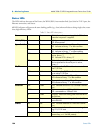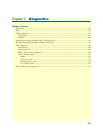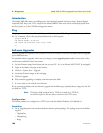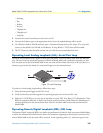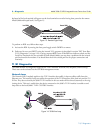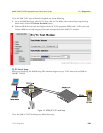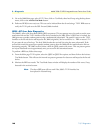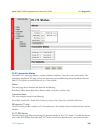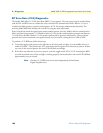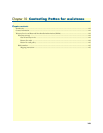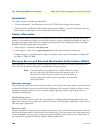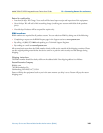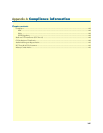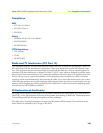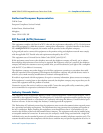
9 • Diagnostics Model 3086 G.SHDSL Integrated Access Device User Guide
142 BIT Error Rate (V.52) Diagnostics
BIT Error Rate (V.52) Diagnostics
The Model 3086 offers a V.52 Bit Error Rate (BER) 511 test pattern. This test pattern may be invoked along
with the LAL and RDL tests to evaluate the unit(s) and the DSL communication links. When a 511 test is
invoked, the 3086 generates a pseudo-random pattern of 511 bits using a mathematical polynomial. The
receiving Model 3086 then decodes the received bits using the same polynomial.
If the received bits match the agreed upon pseudo-random pattern, then the 3086(s) and the communication
link(s) are functioning properly. 511 Initiates a built-in 511 bit pseudo-random pattern generator and detector.
511 with Errors Initiates a built-in 511 bit pseudo-random pattern generator and detector. The test pattern
generator also injects intentional errors approximately once per second, causing the Error LED to blink.
To perform a V.52 BER test, follow these steps:
1. Locate the toggle switch group on the right side on the front panel and place it in the middle where it is
marked “Normal”. This activates the V.52 transmission and reception of the selected test pattern. If there
are errors in the received pattern, the error LED will blink accordingly.
2. If the above test indicates no errors are present, move the toggle switch UP to 511/E, activating the BER
test with intentional errors. If the test light is working properly, the local modem’s red error LED will blink
approximately once per second.
Note
The above V.52 BER tests can be used independently of the Remote
Digital Loopback tests.



